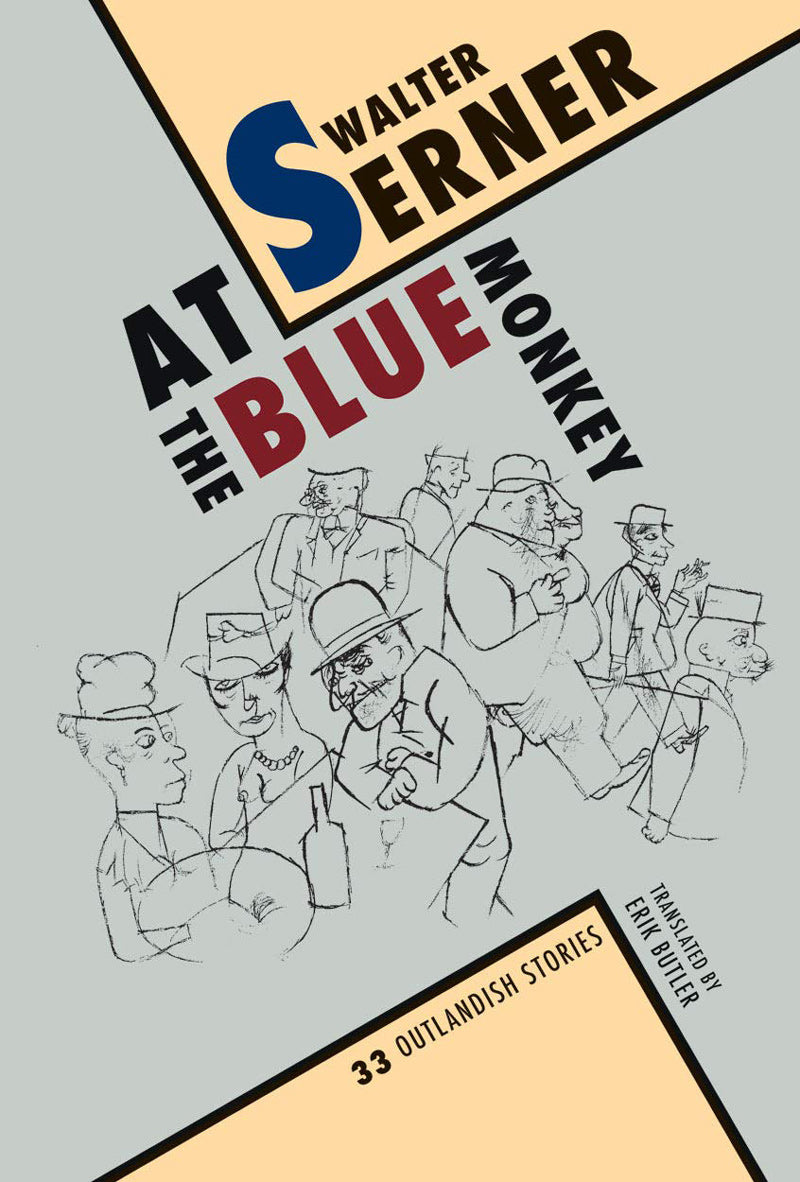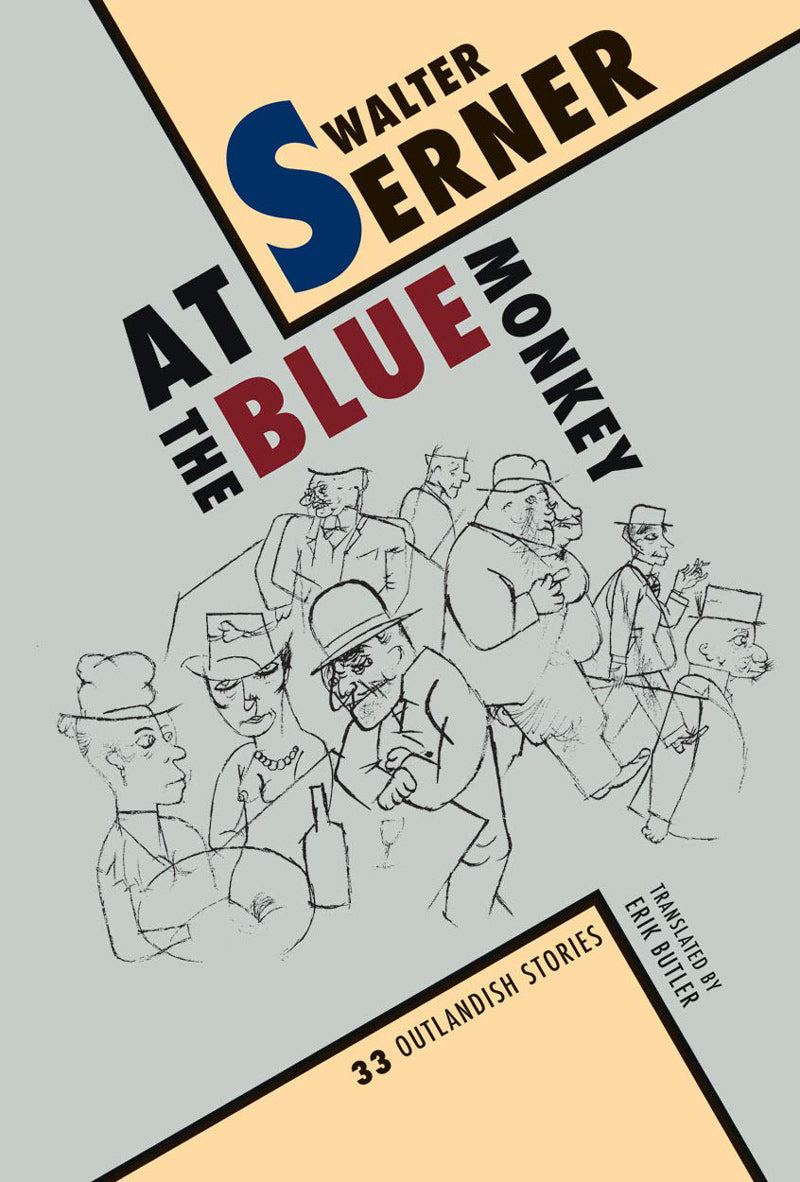At the Blue Monkey: 33 Outlandish Stories
At the Blue Monkey: 33 Outlandish Stories
Walter Serner
Couldn't load pickup availability
Translated, with an introduction, by Erik Butler / December 2019 / 5.375 x 8, 192 pp. / 978-1-939663-46-7
“Serner was so naïve as to think he could find sympathizers in the world of art. After turning his back on the art world—the very art world that would later use his ideas like a brand of laundry detergent—he glorified a world of swindlers in which everybody deceives everybody.”
—Hans Richter
Walter Serner’s first story collection, published in German in 1921, brought to narrative form the essential philosophy he espoused in his earlier Dada manifesto/handbook, Last Loosening: A Handbook for the Con Artist and Those Who Wish to Be One—life is a con job and demands the skills of a swindler. With its depiction of a world of appearances in which nothing can be trusted, At the Blue Monkey helped establish the ex-doctor and renounced Dadaist as a literary “Maupaussant of crime.” This first English translation offers thirty-three stories of criminals, con artists, prostitutes, and gadabouts engaged in a variety of forms of financial insolvency, embezzlement, sexual hijinks, long and short cons, and dalliances with venereal diseases and drugs. With a mordant humor that renders the criminal code into something nearly occult, Serner describes a bevy of hoodlums, pimps, and swindlers utilizing a potpourri of European argot to disquieting effect, waging a secret war against anything crossing their paths—especially in affairs of the ultimate confidence scheme, the heart. Told in a baroque, sometimes baffling poetry of underworld slang in an urban world of bars and rent-a-rooms where human animals are either on unsavory display or on the make, these short tales are presented like so many three-card Montes in which the reader may well be the literary mark.
Walter Serner (1889–1942) helped found the Dada movement in Zurich and embodied its most cynical and anarchic aspects. After breaking with the movement, he began publishing crime stories as well as the 1925 novel The Tigress. Moving constantly across Europe, he eventually disappeared and was rumored to have vanished into the criminal milieu he wrote about; but he had in fact returned to Czechoslovakia, married, and become a schoolteacher. In 1942, he and his wife presumably died after being moved from a concentration camp, his books banned and burned by the Nazis.
Press
“These ‘outlandish’ stories relate casual pranks and complicated grifts that are by turns comic and calamitous: some read like games of Cluedo with the players amped up on coke, while others suggest scenes pulled from a film noir, a genre they anticipate by twenty years.”
—Hal Foster, London Review of Books


